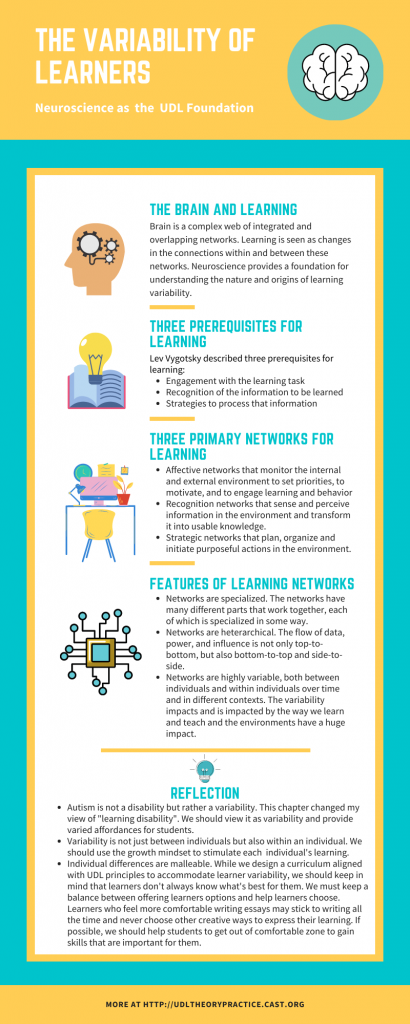What is Canva?
Canva is a versatile web-based graphic design application with a simple and intuitive interface that makes it easy to create graphics and videos. People can work independently or collaboratively on designs.
Alignment to UDL principles
Engagement
- Using Canva collaboratively for visual design can foster collaboration and community.
- Giving students the freedom to create visuals using the different resources in Canva can optimize individual choice and autonomy.
Representation
- In addition to having students create visual designs, teachers can also use Canva to design visuals that highlight patterns, critical features, big ideas, and relationships of the learning content.
- Teachers can illustrate the learning content through multiple media such as graphics and videos.
Action & Expression
- Creating visuals using Canva requires students to plan for the design and make adjustments as they move forward, which supports students’ planning and strategy development.
- Using Canva allows students to use multiple media such as text, graphics, and videos to express learning.
Curriculum Integration
Canva can be integrated into any curriculum that involves students in creating either static or dynamic visual representations. The versatile functionality of Canva supports students to create infographics, posters, video presentations, etc, either individually or collaboratively. For example, teachers can have students work together to create newsletters. Teachers can also ask students to reflect on their learning by creating a Canva visual representation.
Artifact

SWOT analysis
Strengths
- People can access it without having to install any software and it’s also available in app stores.
- It offers a free plan that meets the basic needs of making simple designs.
- The drag-and-drop tool makes it easy to use.
- It provides templates for creating different types of graphics including infographic, posters, social media posts, logos, flyers, and presentations etc.
- It allows users to create videos and presentations with webcam videos.
- It has a collaborative feature to allow people to collaborate on the same design.
- People can download the designed graphics in different formats.
- It is 100% free for K-12 teachers and their students (but not for higher education).
Weaknesses
- The size of the templates could be too large and it is not resizable unless you upgrade it to a premium plan.
- There is no ruler to guide the position an size.
- The mobile app does not have the same functions and it’s very easy to lose your work.
- Free resources are very limited and people would have to purchase a pro version with $119.40 per year to access the premium resources. This plan allows 5 people to collaborate with it. The individual cost would be lower if 5 people share the cost.
- Recorded presentation with webcam video can only be shared with a link and it’s not downloadable.
Opportunities
- Students can use Canva to create visual designs without a too deep learning curve.
- Students can express their creativity through different types of designs using Canva.
- Students can collaborate on the same design.
Threats
- It may not be accessible to students with visual impairments or blindness since they have to be able to see in order to make visual designs.
- Students may get frustrated when they realize the template size cannot be customized after a lot of work has been done. This constraint forces students to either have to adjust their design or cut the extra space after downloading their design.
